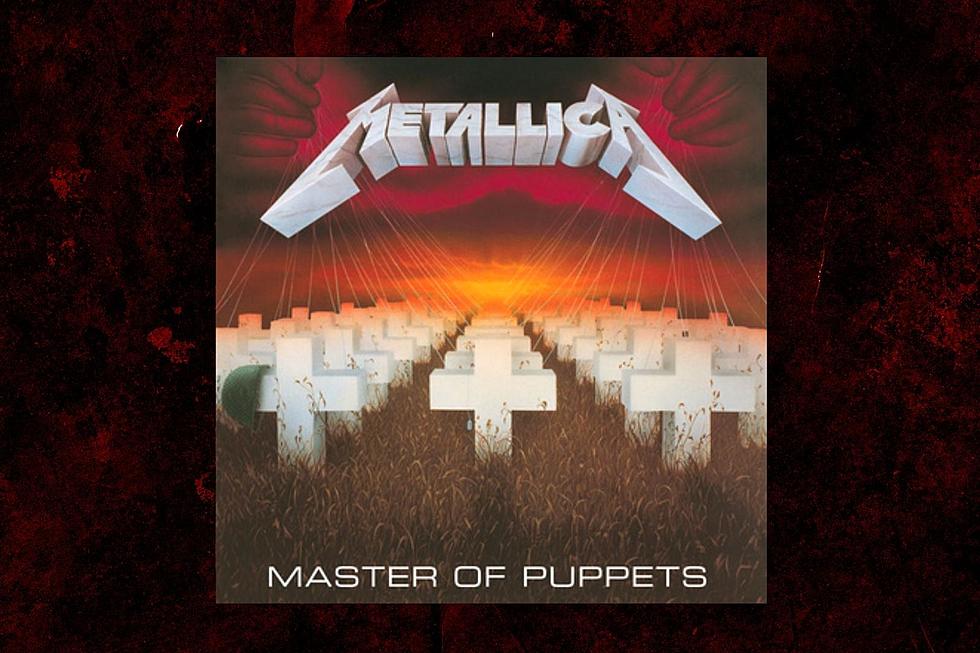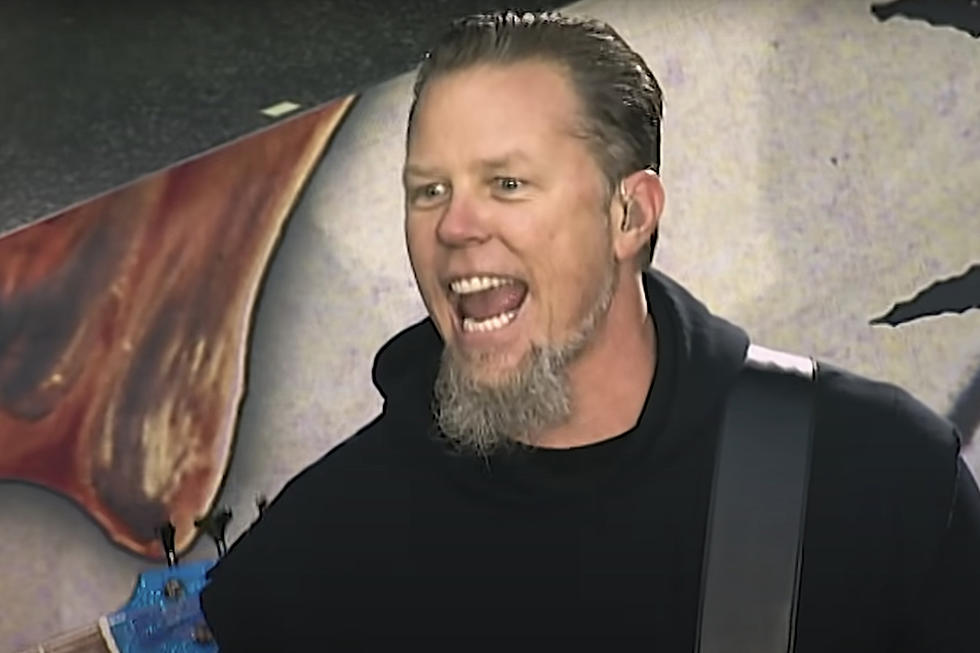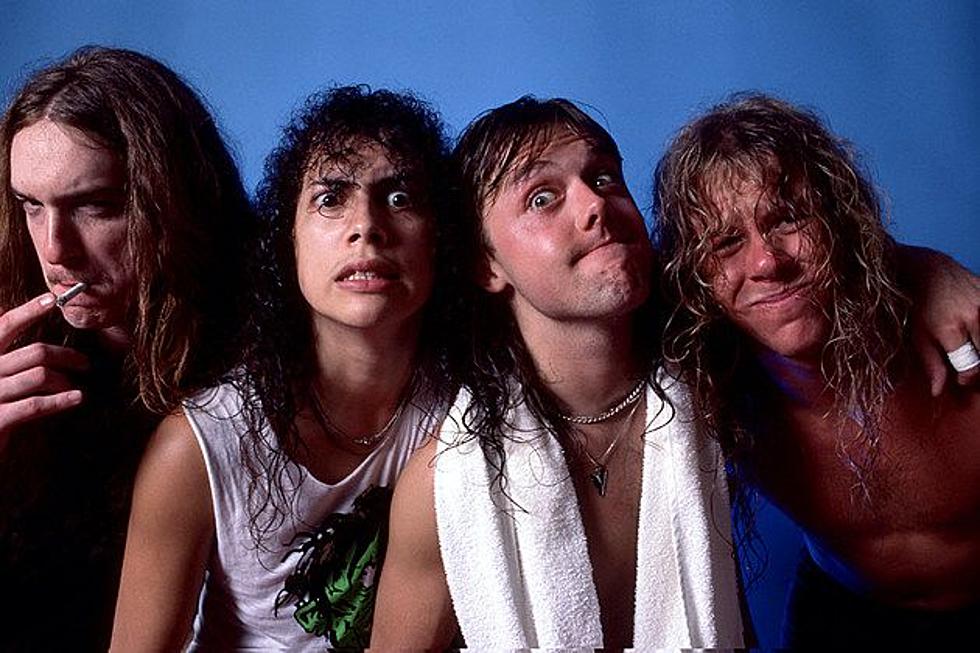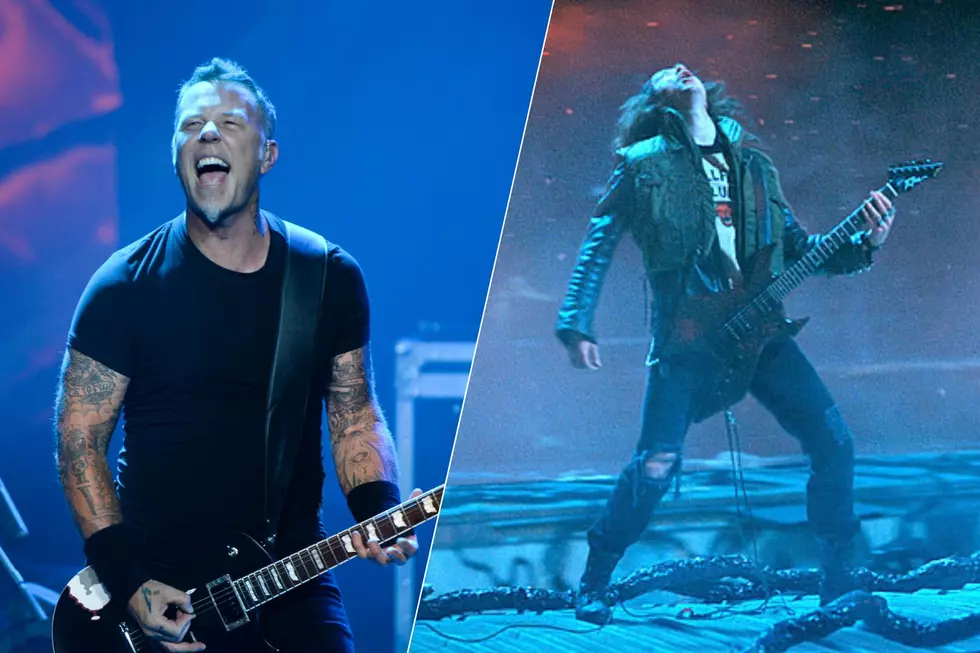
Metallica, ‘Master of Puppets’ – Album Overview
Two albums into their career Metallica had built a solid fan base and helped establish and popularize the thrash genre. Master of Puppets was a game-changer for both the band and metal in general.
Commonly labeled as one of the best and most important metal albums ever, it took Metallica to that so-called "next level" that would set them on a path to become the biggest metal band in the world.
Master of a Major Label
Signed to Elektra after Ride the Lightning was released, Metallica’s third album would be their first recorded under the auspices of a major label. They returned to Sweet Silence Studios in Copenhagen, Denmark, for their second straight album, once again working with producer Flemming Rasmussen.
Master of Puppets was mixed by Michael Wagener—who previously worked with artists like Motley Crue, Dokken and White Lion and would go on to mix Megadeth’s So Far, So Good...So What a couple of years later.
Metallica took more time recording Master of Puppets than their first two records, resulting in a more diverse and textured effort. The band’s songwriting and musicianship continued to improve as well. Unfortunately this would be the final album for bassist Cliff Burton, who was tragically killed in a bus accident in Sweden while the band was touring in support of the album.
Go For the Gold
Released March 3, 1986, Master of Puppets was the first Metallica album to go gold—meaning, it was the first to sell 500,000 copies—and peaked at No. 29 on the Billboard album chart. This was done without the added promotion of music videos or the benefit of radio airplay.
To date, it has sold more than 6 million copies across the globe.

Watch Metallica Perform "Battery" in 1986
Master of Puppets Track by Track
"Battery"
Like "Fight Fire With Fire" on their previous album, "Battery" begins acoustically before the thrash kicks in about a minute into the song. It has held up as one of the band’s finest songs, and for several years after its release Metallica would open live shows with "Battery." It's easy to think the lyrics refer to anger management and "assault and battery," but they actually pay homage to a venue in San Francisco where the band used to play that was located on Battery Street—and ultimately, as James Hetfield has said, the song and lyrics are about Metallica and their fans.
"Master of Puppets"
When it comes to riffs, they don’t get much better than "Master of Puppets." Legions of young metalheads were inspired to start playing guitar because of this album—and this song specifically. It was also supposedly Cliff Burton’s all-time favorite Metallica song. It’s about drugs and how they control the user, not the other way around.
It would eventually be covered by countless other bands and even was used in an episode of The Simpsons and the movie Old School. It would also become Metallica’s most-played live song, with hardly a concert going by since its release that it has not been played.
"The Thing That Should Not Be"
Like "The Call of Ktulu" from Ride the Lightning, this song was inspired by horror/fantasy author H.P. Lovecraft. It’s based on his 1936 short story, "Shadow Over Innsmouth." It is not one of the better-known tracks on the album, but it is a solid song with some memorable riffage.
"Welcome Home (Sanitarium)"
The lyrics for this song are about being trapped in insanity or a mental asylum. Hetfield says it was inspired by the Jack Nicholson movie, One Flew Over the Cuckoo’s Nest. It has that patented Metallica slow-build, progressively getting faster and heavier. You might also recognize part of the riff from Rush’s "Tom Sawyer" in this song, and the band even thanked Rush in the liner notes. The demo version of the song was much longer, and a couple of solos that weren’t used on the final version actually ended up on "Orion."
"Disposable Heroes"
A very complex song, "Disposable Heroes" combines some straightforward riffs with more intricate guitar work from Hetfield and Kirk Hammett. Its anti-war message is from the perspective of a front-line soldier with death all around him and feeling helpless and out of control. The chorus is from a higher-up individual, who orders him "back to the front."
Slipknot frontman Corey Taylor has called "Disposable Heroes" his favorite Metallica song of all time.
Just like part of "Orion" was taken from a demo version of "Welcome Home (Sanitarium)," a riff that didn’t make the final cut of "Disposable Heroes" was used in the album closer "Damage, Inc." The song would only be performed live once when Burton was in the band, at a 1985 German festival.
"Leper Messiah"
The lyrics on Master of Puppets cover a variety of subjects, with the common theme of control and manipulation, as signified by the album title. Religion is the topic on "Leper Messiah," specifically TV evangelists bilking their viewers out of money. Dave Mustaine claimed he wrote the main riff for the song and was not given songwriting credit. Metallica denies that Mustaine made any contribution to the track. The title is inspired by lyrics from David Bowie's "Ziggy Stardust."
"Orion"
Metallica continued their tradition of instrumentals with the inclusion of "Orion." All band members play on the song, but Burton is the star. He wrote most of it and has a couple of bass solos that actually sound like guitar solos. Hammett contributes three guitar solos as well.
The title comes from the constellation Orion, because parts of the song have a space rock vibe. "Orion" was played at Burton’s funeral. The band didn’t perform the song on stage until 2006, when Master of Puppets was played in its entirety during the Escape From the Studio ‘06 tour.
"Damage, Inc."
One of the fastest songs on the album, "Damage, Inc." is an appropriate closer. It continues the angry lyrical theme of the record, talking about violence, destruction and damage.
It brought to a close a remarkably cohesive album that found Metallica raising the bar in all areas. It would be well-received then and is considered a classic today. Everything was going great for the band, and because of this record, they graduated to headlining status.
But on a road near Dorarp, Sweden, on Sept. 27, 1986, everything changed. The tour bus lost control, flipped over, and Burton was killed.
Watch Metallica Perform "Damage, Inc." In 2021
Our Favorite Metallica Cover Art — Singles
More From Ultimate Metallica









